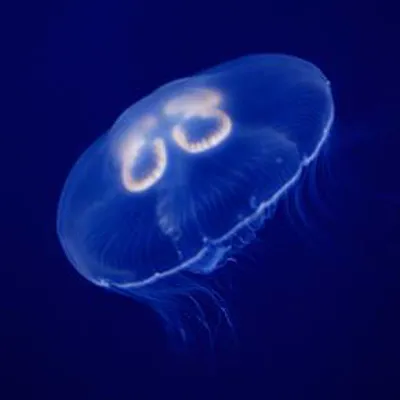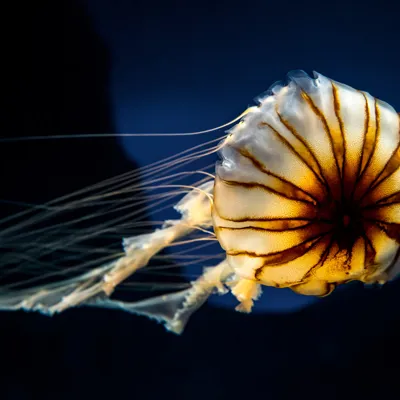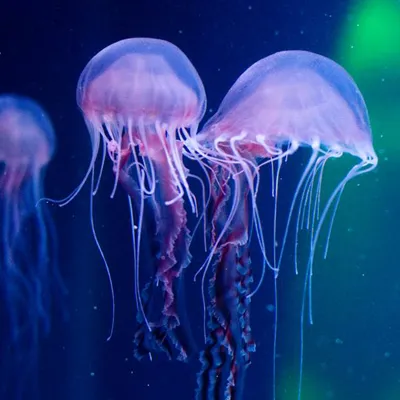- SEA LIFE, Jelly Invaders
Jellyfish
Jellyfish are older than all of our ancient reptiles. Scientists believe they first swam in our oceans around 500 million years ago! There are more than 350 different species of jellyfish.
The Lion’s Mane Jellyfish is over two metres tall – that’s taller than you! Others are as tiny as a pinhead. They can be found in all of our oceans and sometimes in freshwater too.
Jellyfish have venomous tentacles that they use to capture their prey. Most jellyfish are harmless to humans, but a few including the Box Jellyfish can cause a painful sting. Some species of baby fish are able to hide amongst Jellyfish tentacles for protection!
At the National SEA LIFE Centre Birmingham you’ll be able to see jellyfish in a whole new light!

Moon Jellyfish - Aurelia Aurita
- Moon Jellyfish are a common species of found all around the UK
- They can withstand temperatures as low as 6 and as high as 31 degrees Celsius
- Their sting is fairly mild
- Turtles feed on Moon Jellyfish!

Sea Nettle Jellyfish - Chrysaora Melanaster
- Sea Nettle Jellyfish have a sting that can cause skin irritation and a burning sensation
- They are voracious carnivores, eating other jellyfish, copepods, anchovy eggs, larvae and zooplankton
- Their tentacles can get up to 3 metres long!

Sarlacc Jellyfish - Chrysaora Achlyos
- Sarlacc Jellyfish can grow to huge proportions with a bell diameter of up to one metre and tentacles reaching a staggering five or six metres!
- It is set apart from other jellyfish by its dark pigmentation and what’s more, they’re the largest invertebrates to have been discovered in the 20th Century